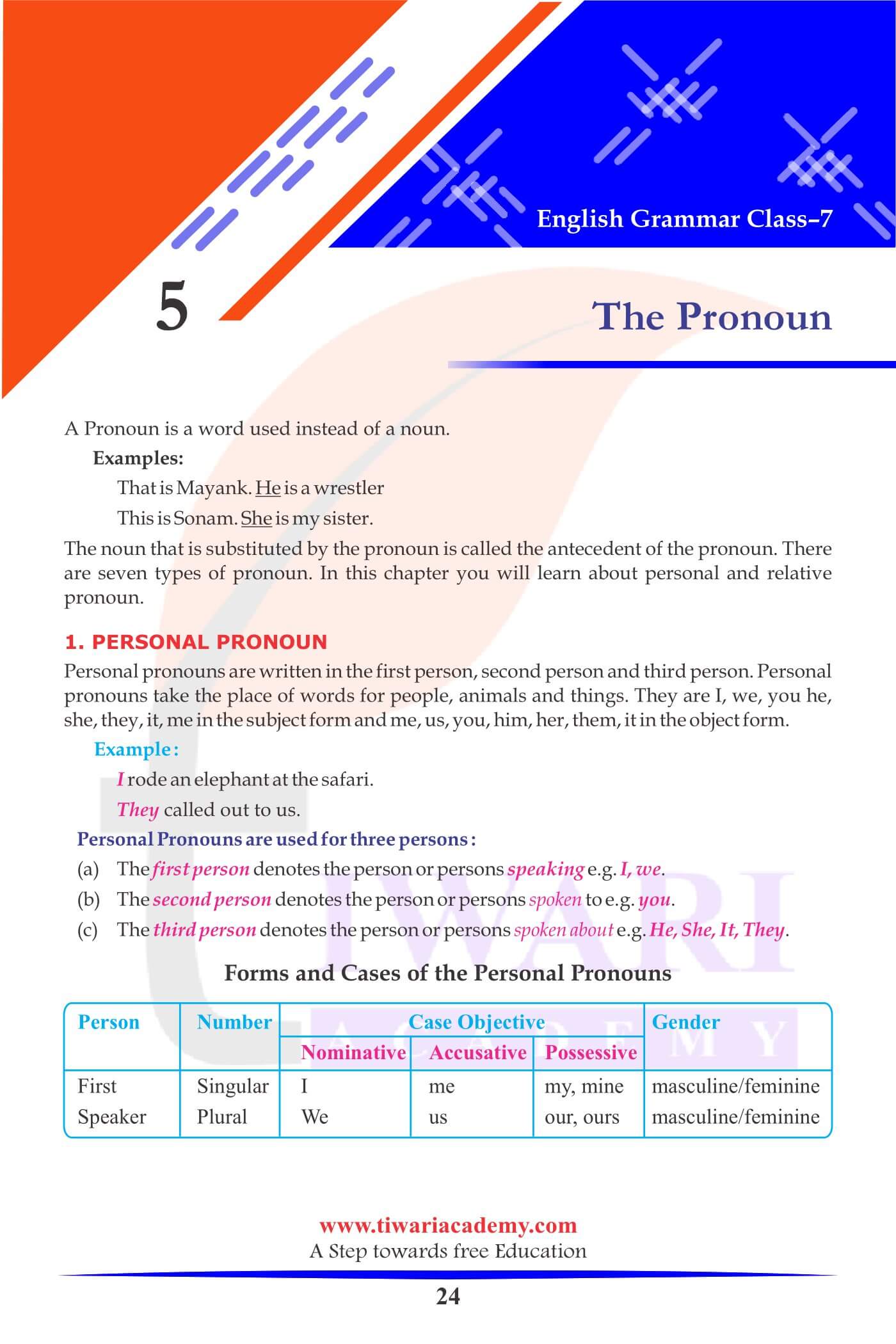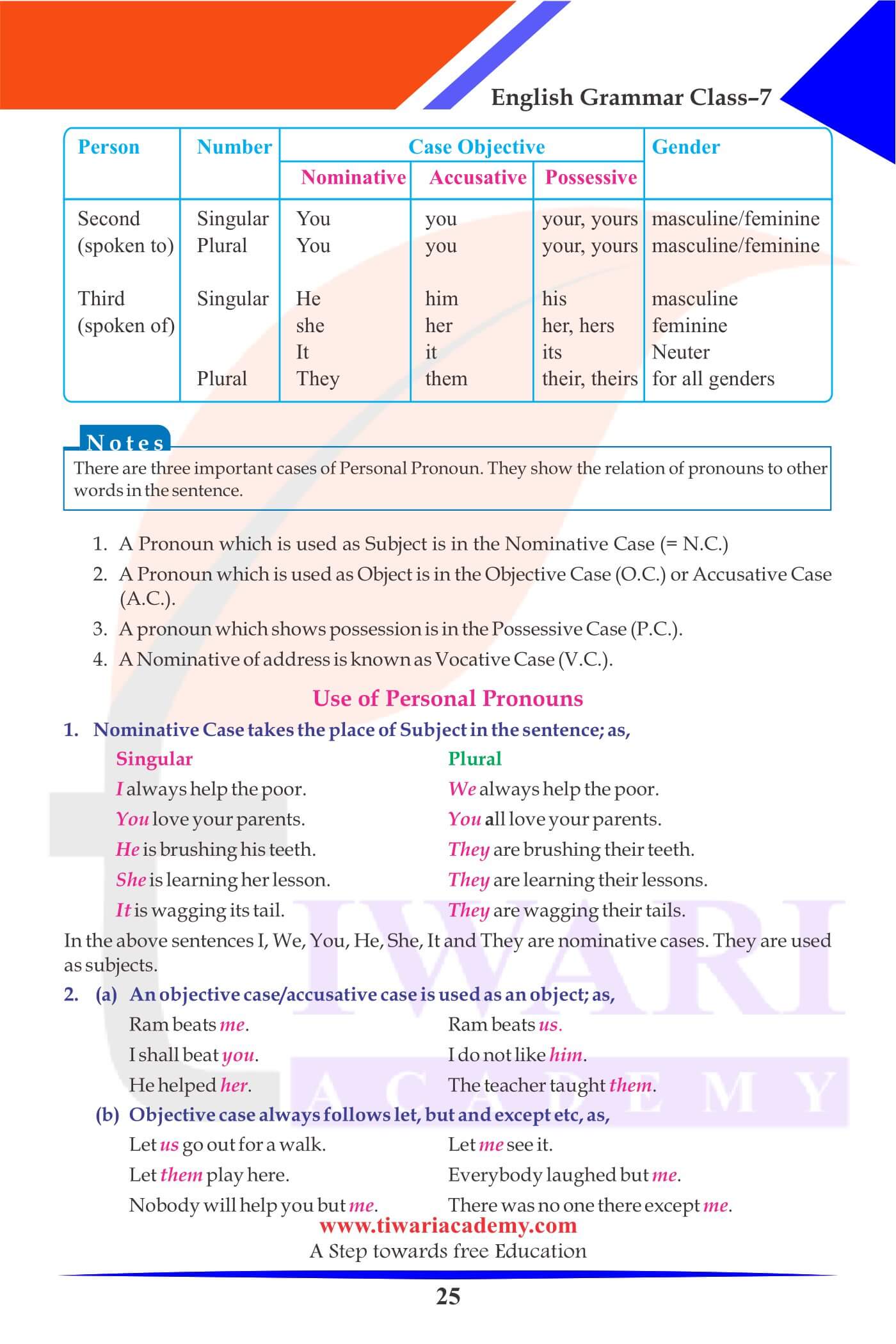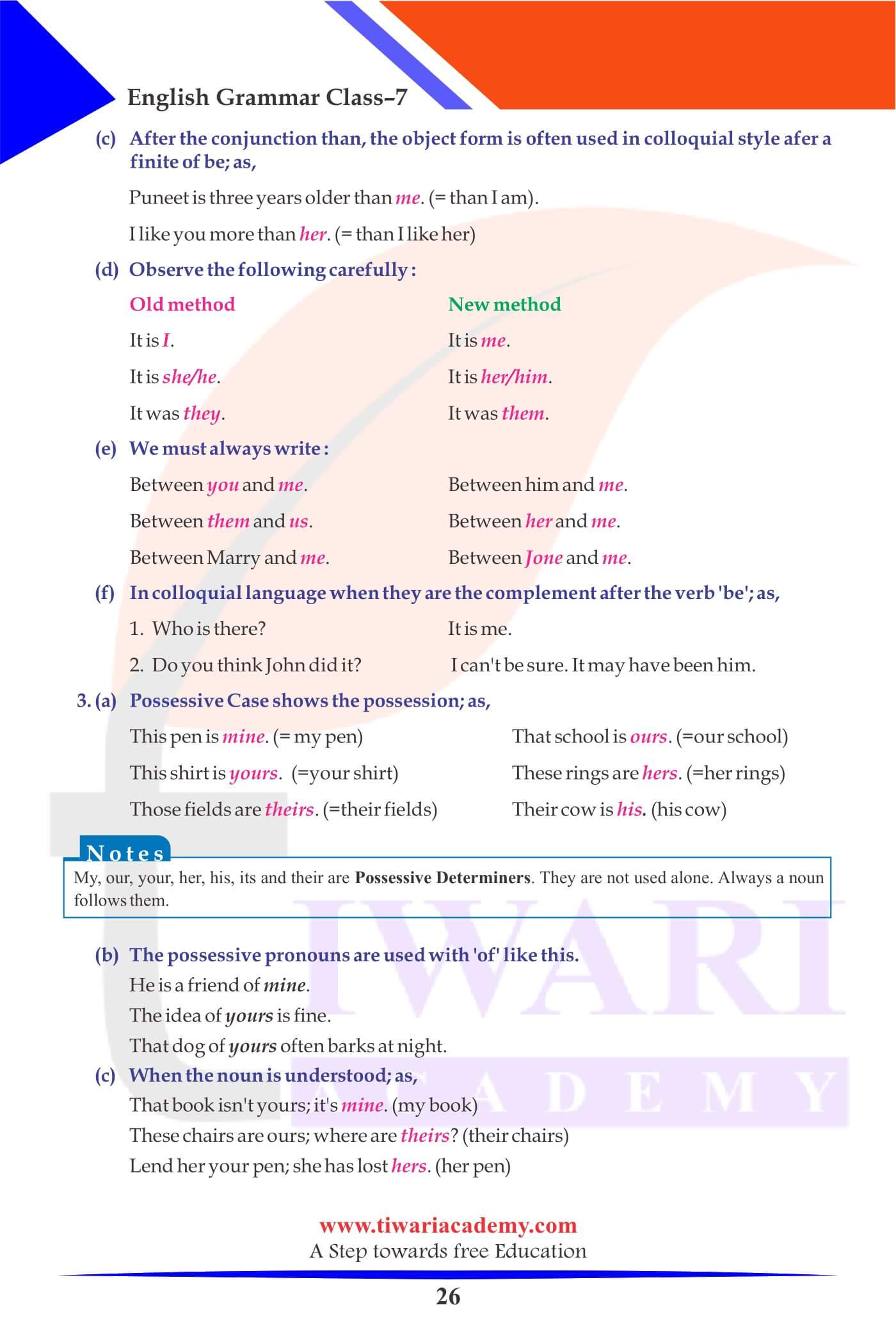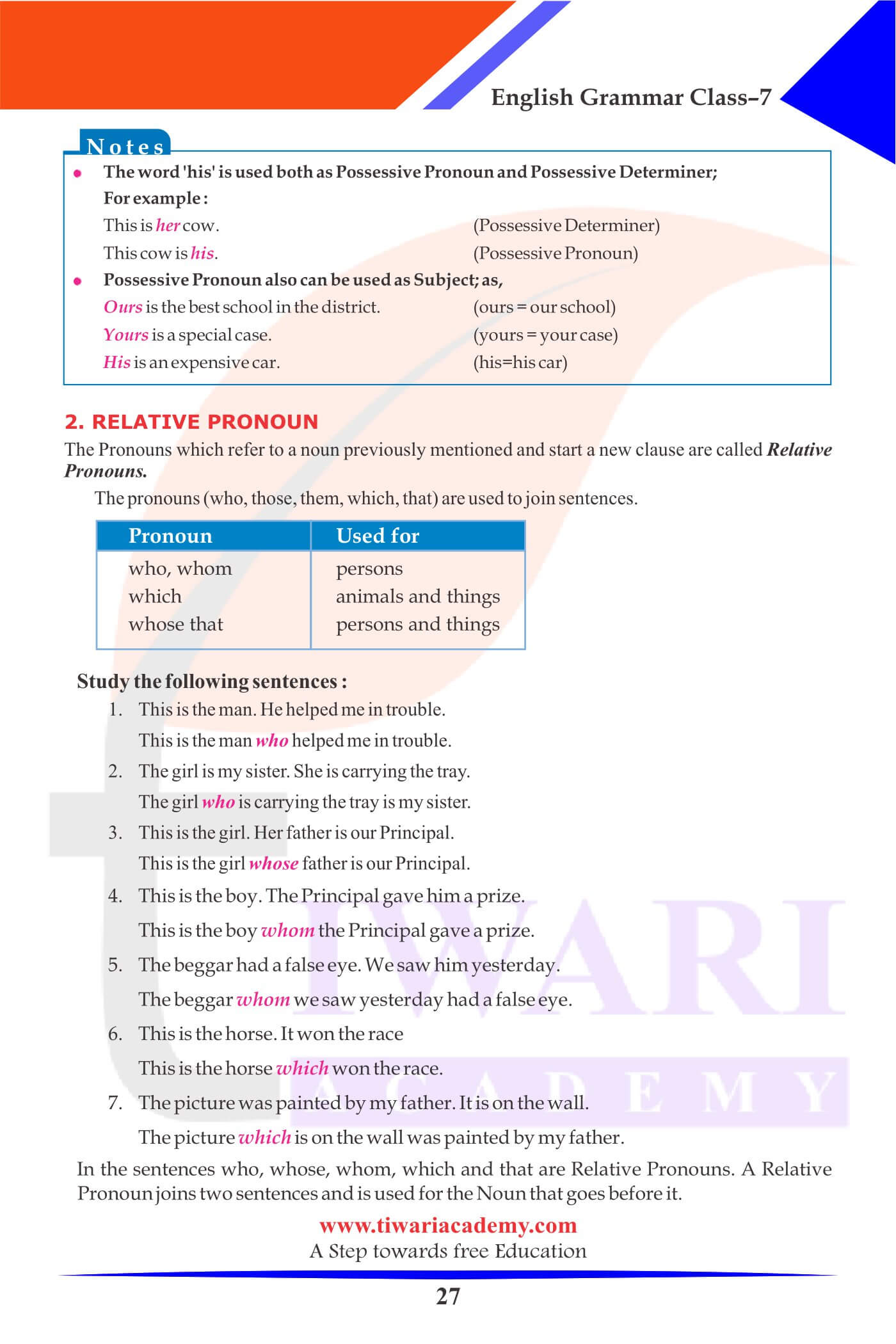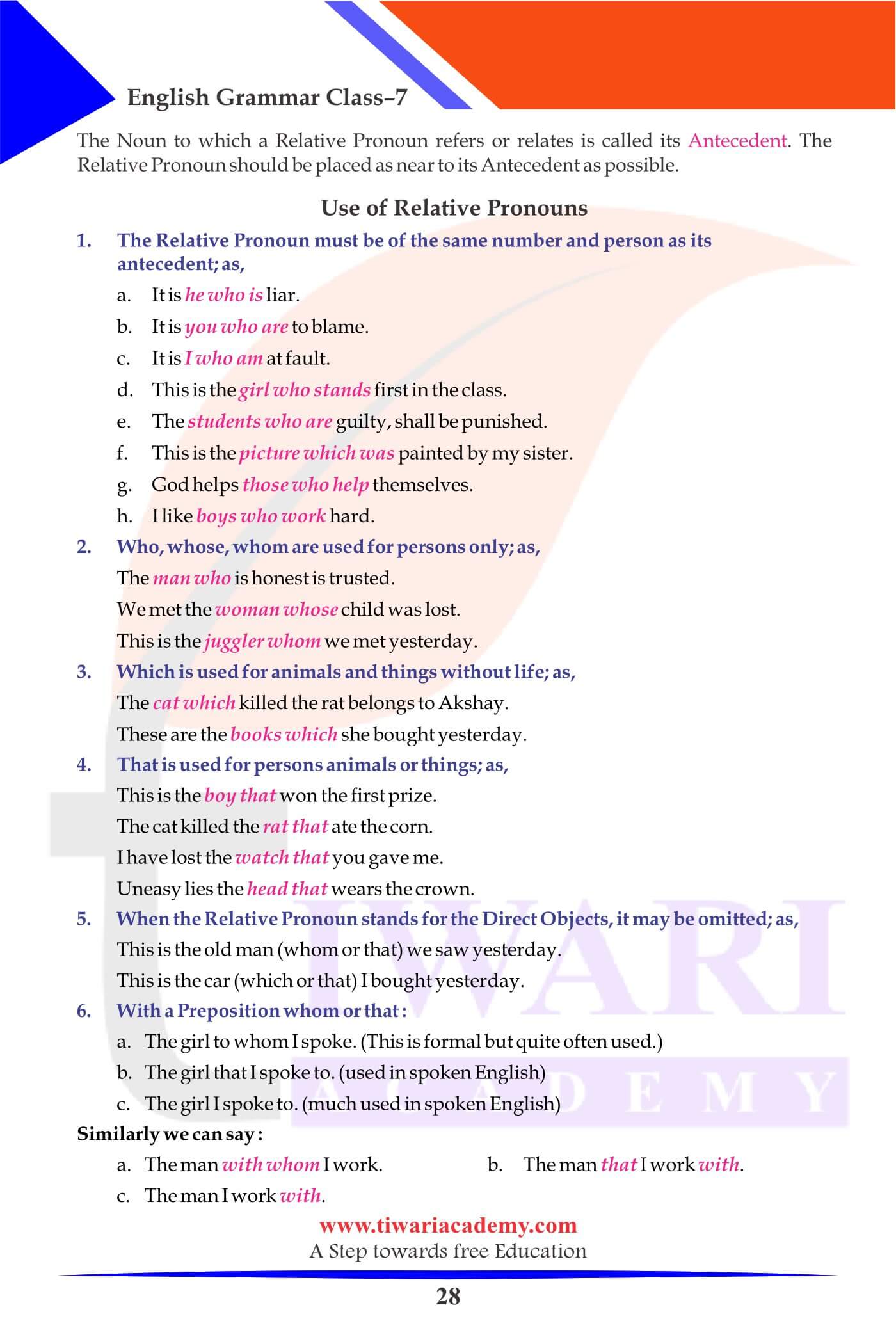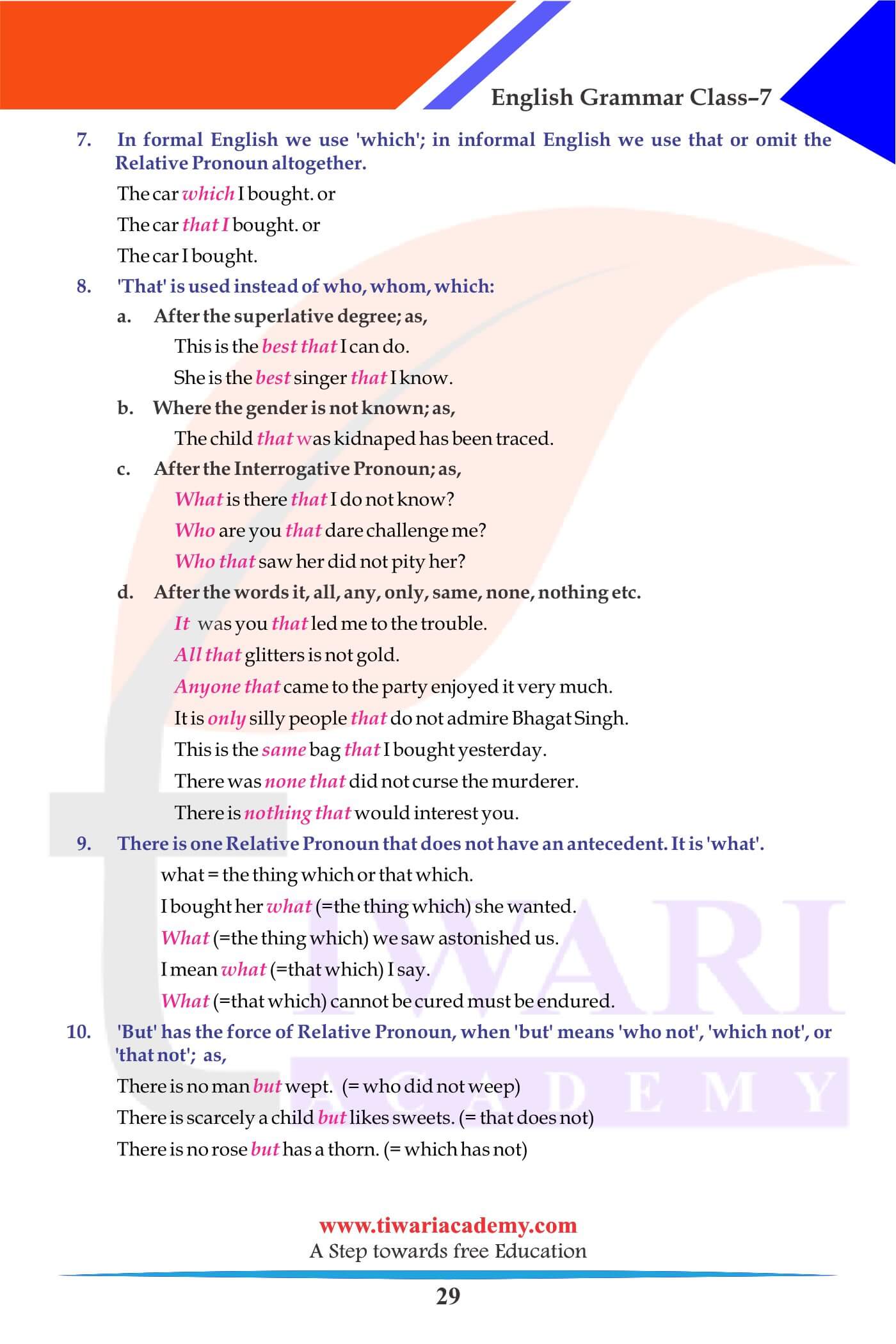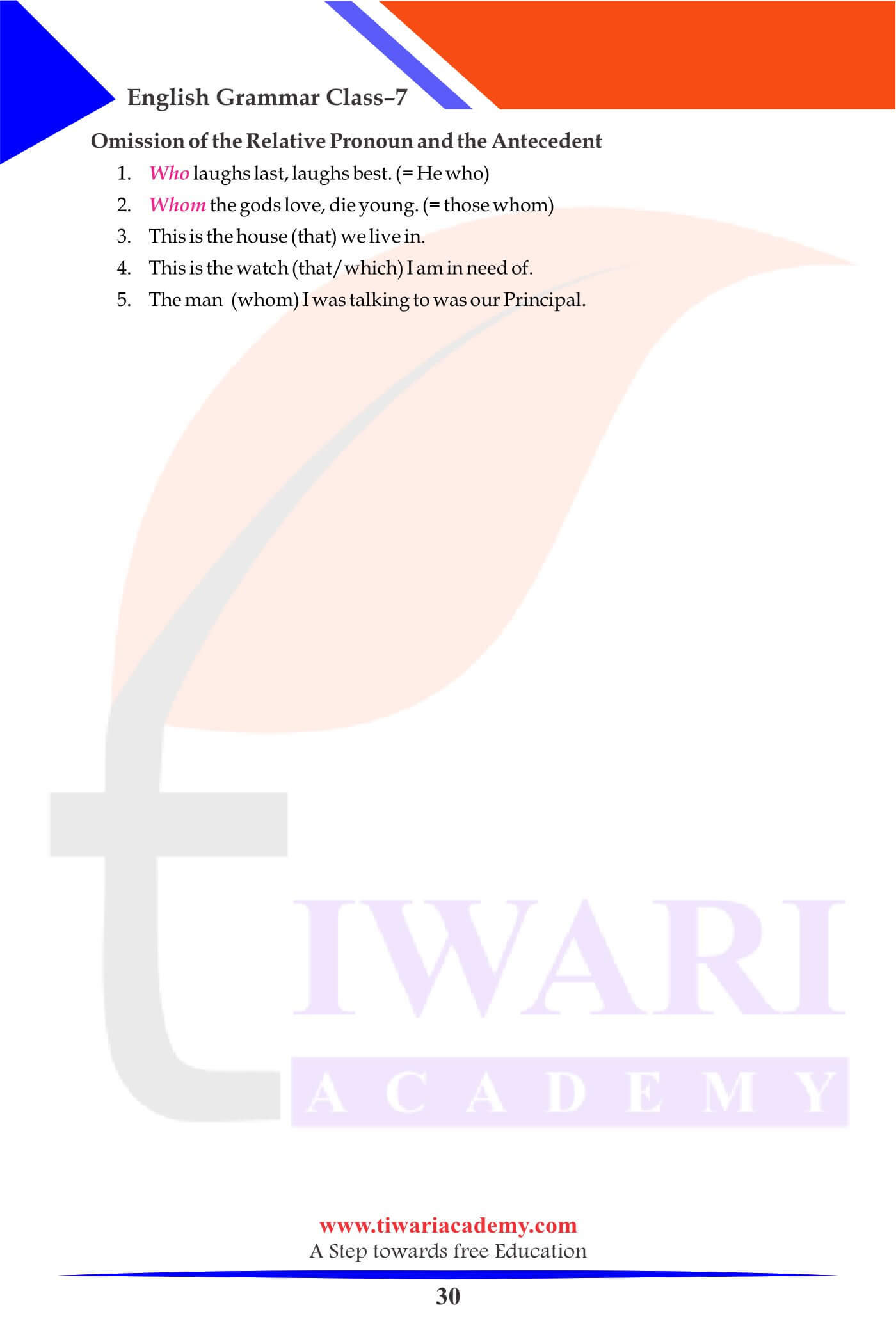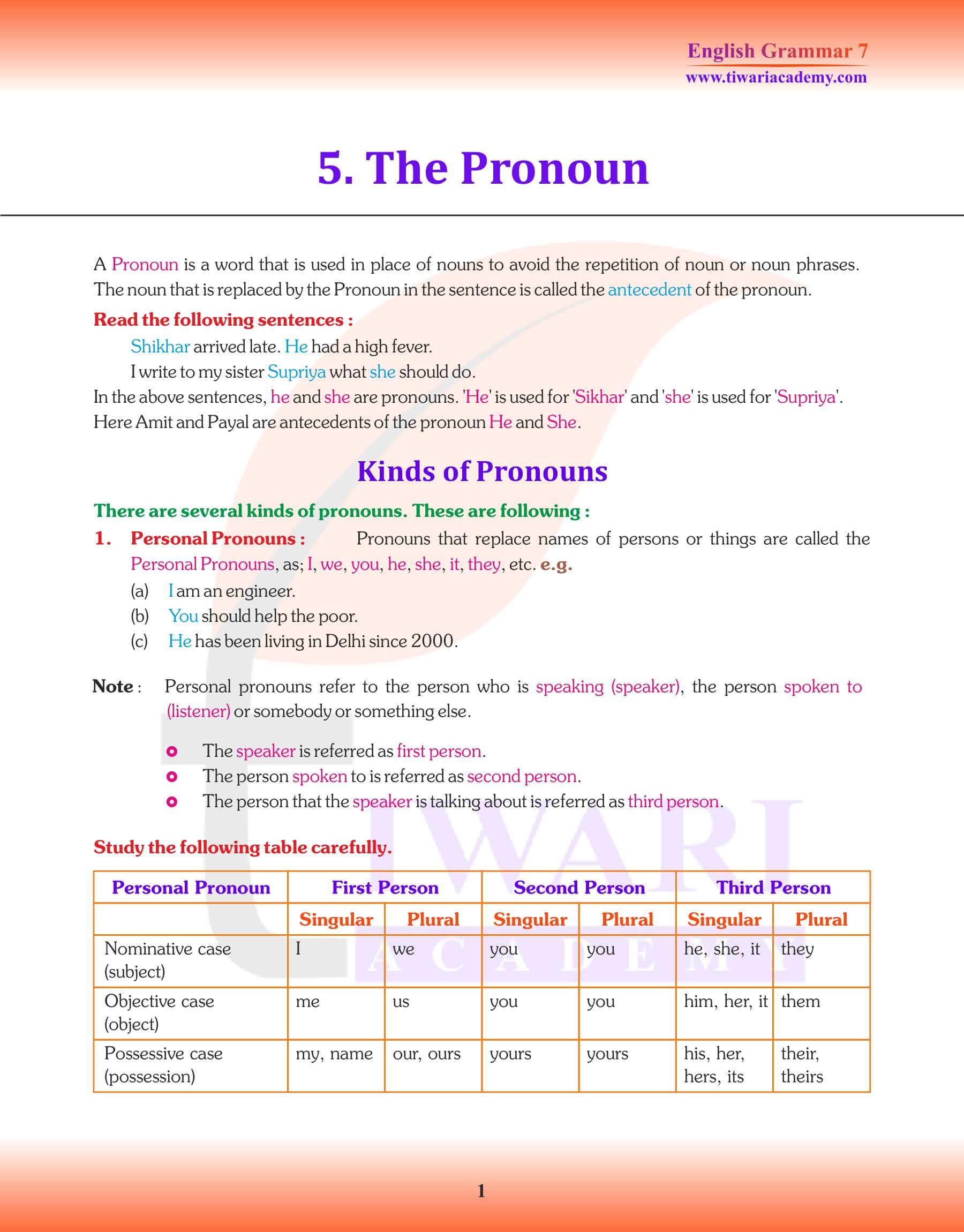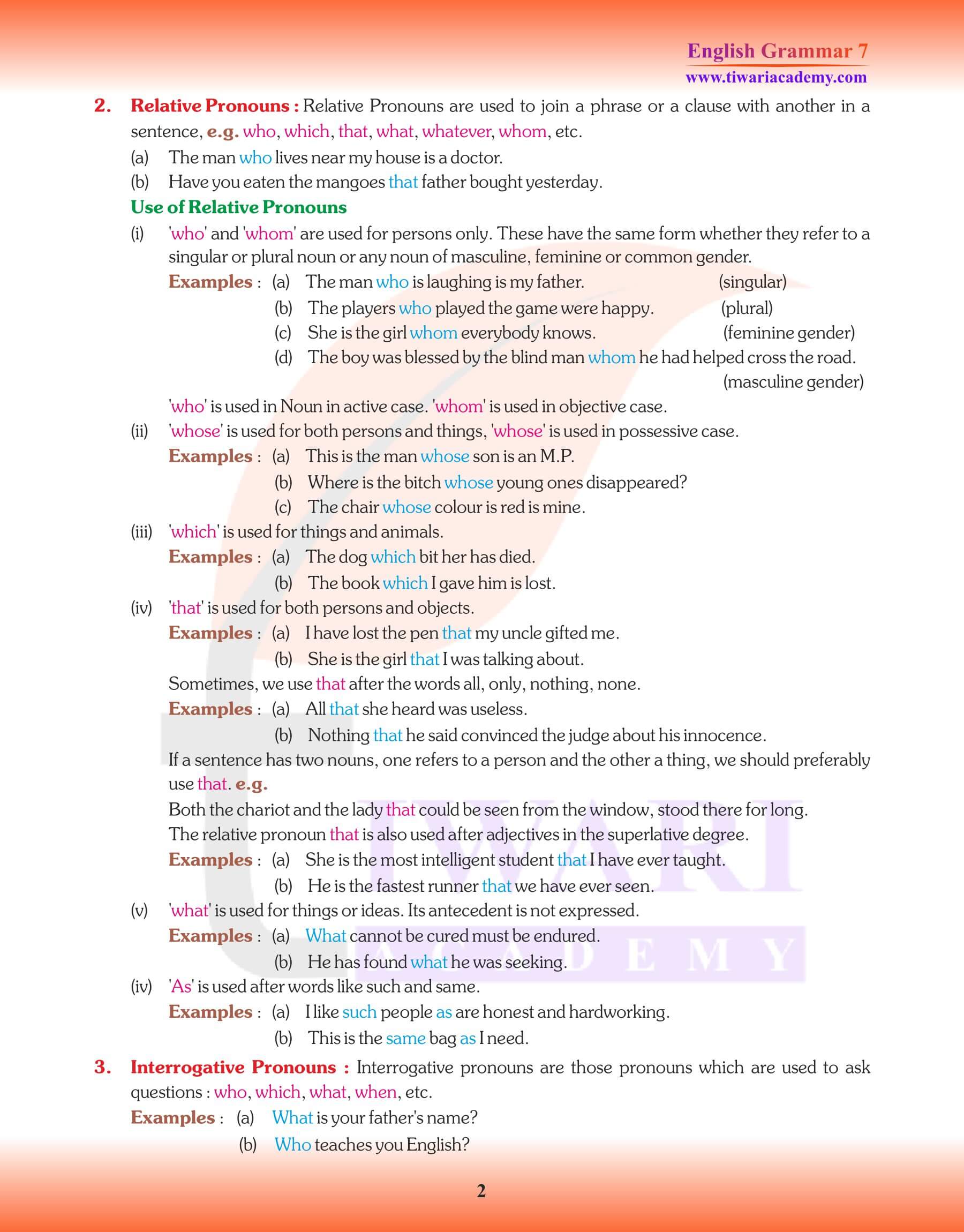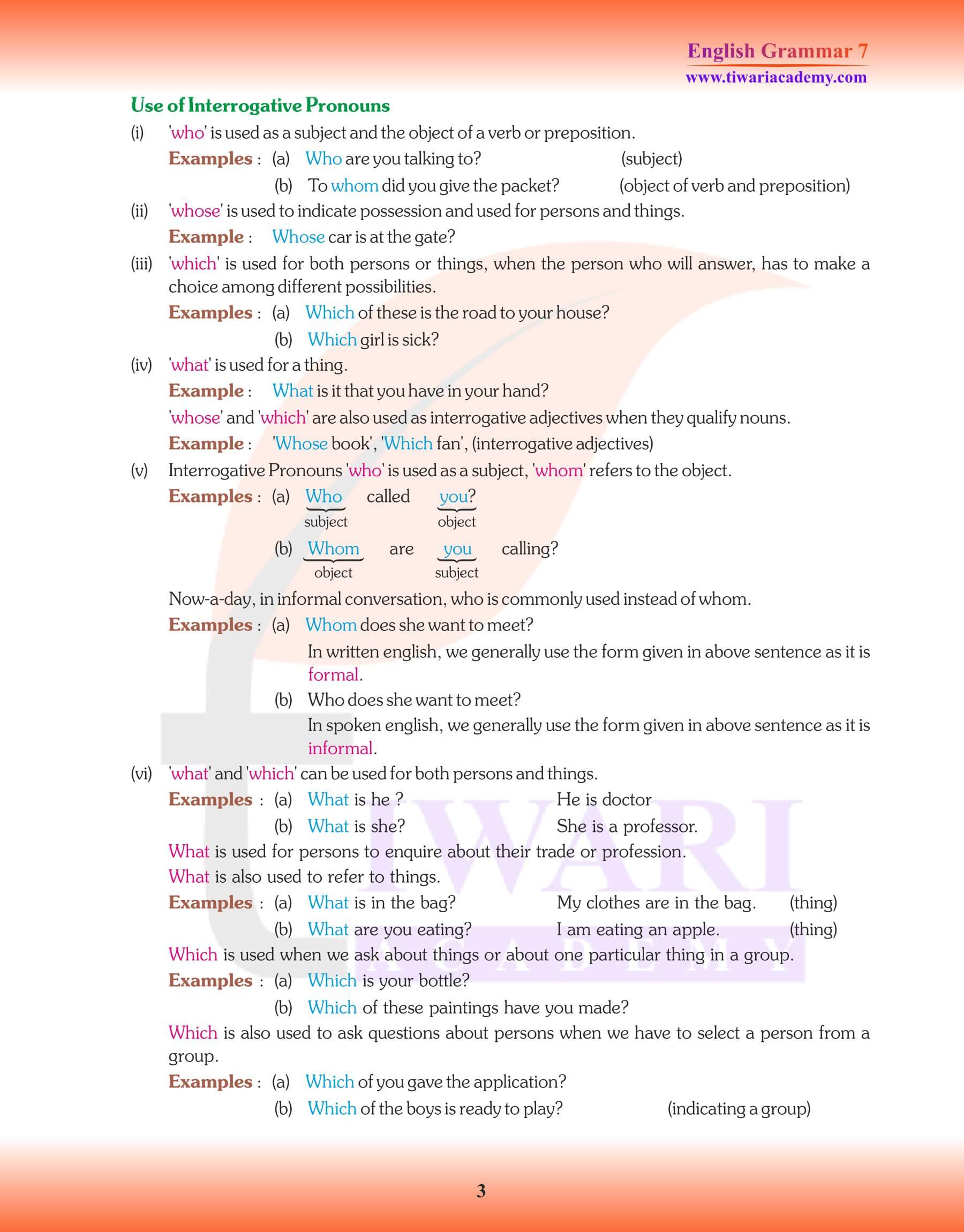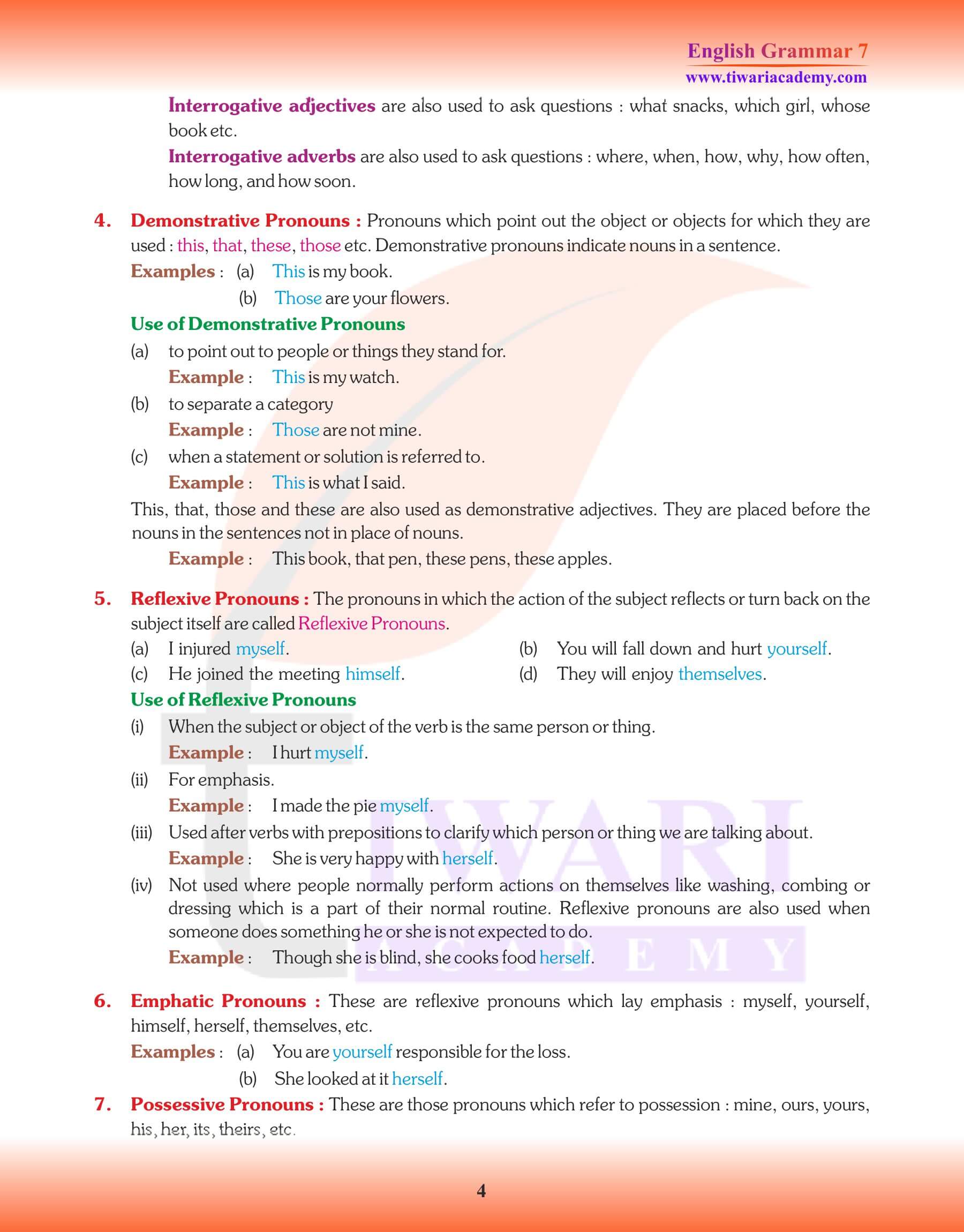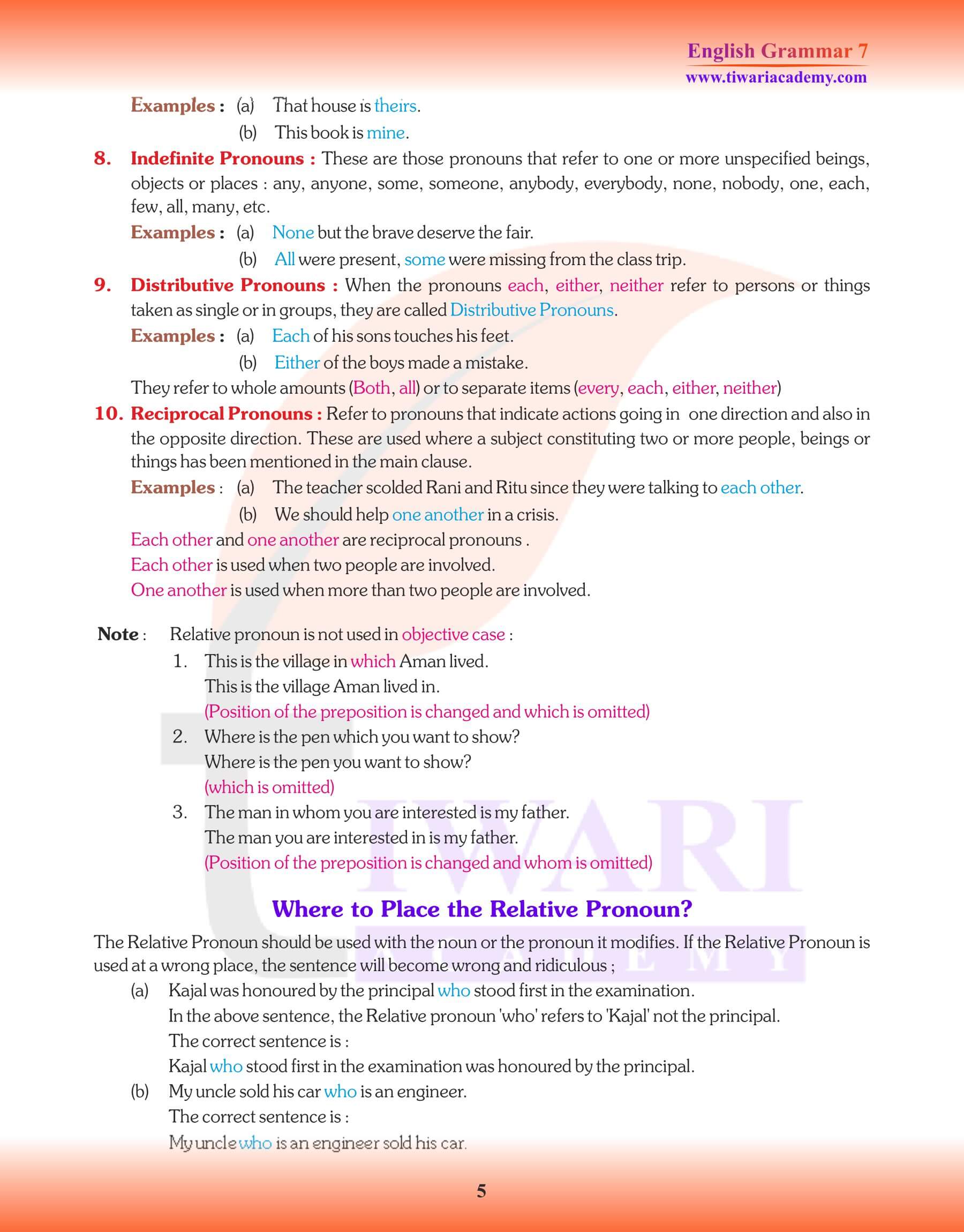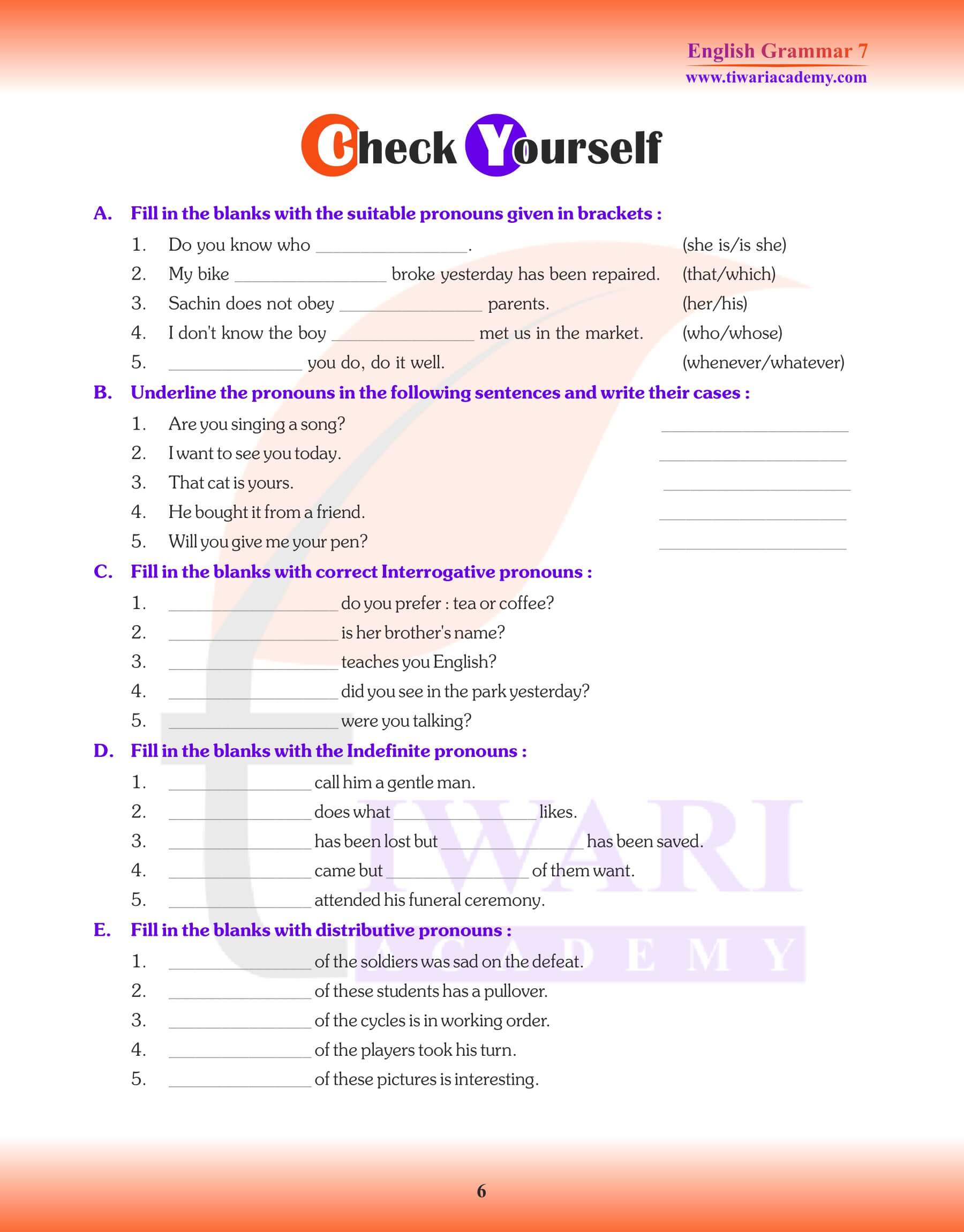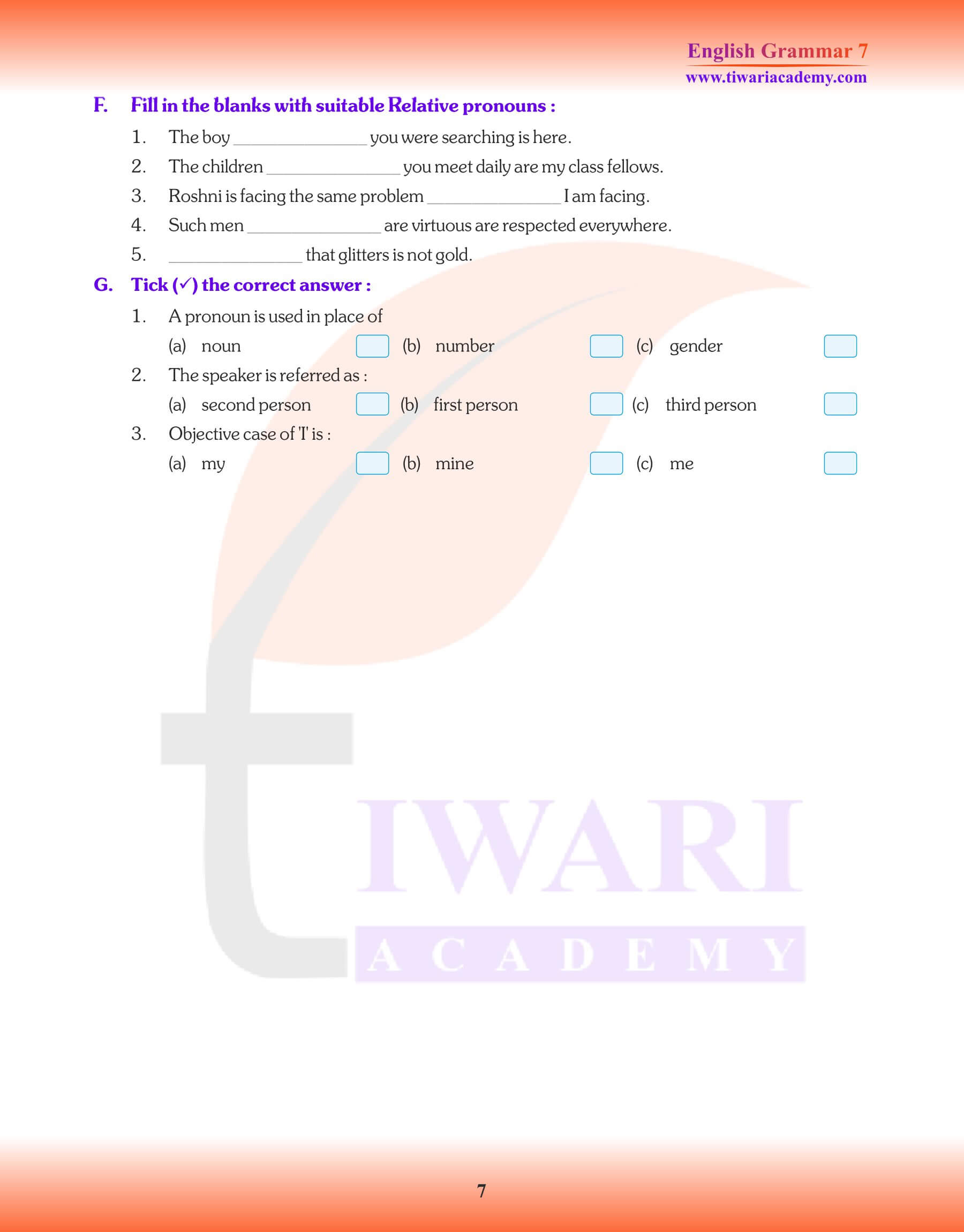Class 7 English Grammar Chapter 5 The Pronoun. A Pronoun is a word used instead of a noun. The noun that is substituted by the pronoun is called the antecedent of the pronoun. There are seven types of pronoun. In this chapter you will learn about personal and relative pronoun. There are so many examples of each type of pronoun are given so that students can understand easily all the concepts.
Class 7 English Grammar Chapter 5 The Pronoun and its kinds
Delving into Chapter 5 of the Class 7 English Grammar curriculum, we navigate the intriguing world of ‘Pronouns’. At its core, a pronoun serves as a placeholder, stepping in for a noun and providing fluidity in linguistic expressions. The noun it replaces is termed the ‘antecedent’. This chapter enlightens students about the vast spectrum of pronouns, specifically emphasizing the Personal and Relative pronoun categories. The English language offers seven distinct types of pronouns, each enriching sentences with diverse grammatical flavors.
| Class: 7 | English Grammar |
| Chapter: 5 | The Pronoun |
| Textbooks: | Main book and Revision Book |
| Academic Year: | 2024-25 |
Class 7 English Grammar How to use Pronoun
Personal Pronouns
Personal pronouns are written in the first person, second person and third person. Personal pronouns take the place of words for people, animals and things. They are I, we, you he, she, they, it, me in the subject form and me, us, you, him, her, them, it in the object form.
The educational journey through this chapter is made accessible with a plethora of examples for each pronoun type. These real-world instances ensure that learners can seamlessly comprehend and internalize the intricate dynamics of pronouns. By the end, students will be well-equipped to discern and adeptly employ the appropriate pronouns in their everyday communication, showcasing their enhanced grasp of English grammar.
Points to be remembered
- A Pronoun which is used as Subject is in the Nominative Case.
- A Pronoun which is used as Object is in the Objective Case or Accusative Case.
- A pronoun which shows possession is in the Possessive Case.
- A Nominative of address is known as Vocative Case.
Use of Personal Pronouns
| Singular | Plural |
|---|---|
| He is brushing his teeth. | They are brushing their teeth. |
| She is learning her lesson. | They are learning their lessons. |
| You love your parents. | You all love your parents. |
| It is wagging its tail. | They are wagging their tails. |
| I always help the poor. | We always help the poor. |
The possessive pronouns
He is a friend of mine.
The idea of yours is fine.
That dog of yours often barks at night.
Relative Pronouns
The Pronouns which refer to a noun previously mentioned and start a new clause are called Relative Pronouns. The pronouns (who, those, them, which, that) are used to join sentences.
| Pronoun | Used for |
|---|---|
| who, whom | persons |
| which | animals and things |
| whose that | persons and things |
Main Points
When the Relative Pronoun stands for the Direct Objects, it may be omitted.
This is the old man (whom or that) we saw yesterday.
This is the car (which or that) I bought yesterday.
With a Preposition whom or that
a. The girl to whom I spoke. (This is formal but quite often used.)
b. The girl that I spoke to. (used in spoken English)
c. The girl I spoke to. (much used in spoken English)
